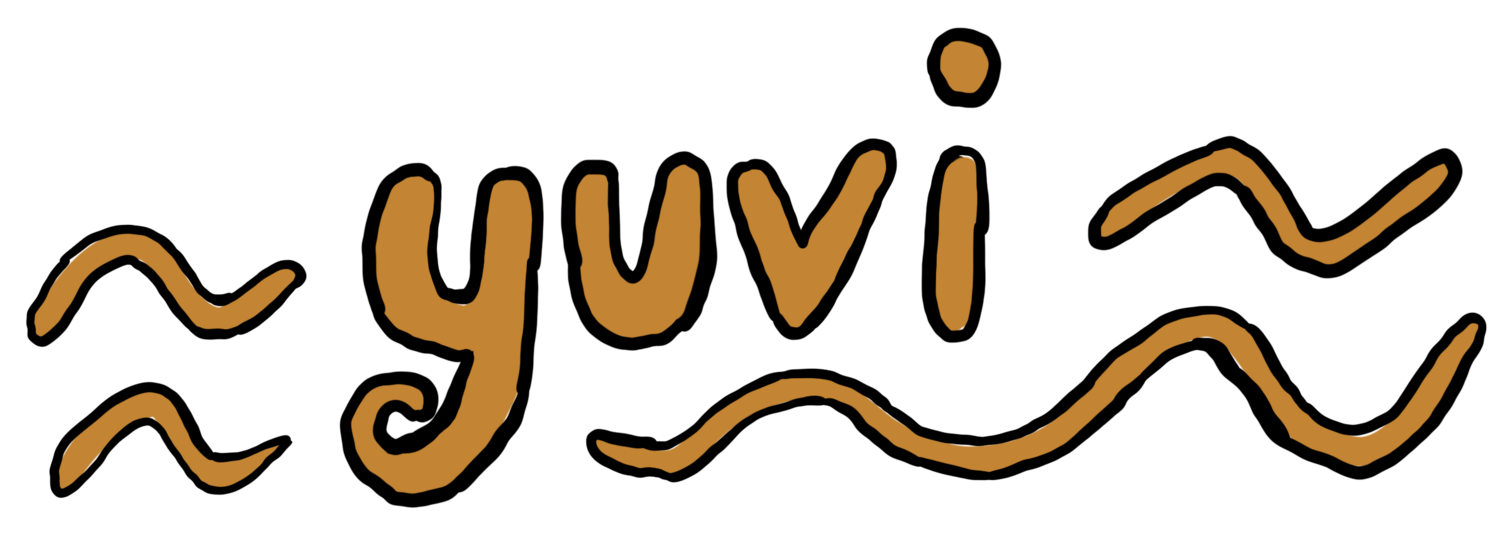
In Medias Res in Clair Obscur: Expedition 33 (video)
The storytelling concept of "in medias res" has been on my mind for many years, as it applies to my own writing, and also when I read a book or watch something on TV. And ALSO, as it turns out, when I play a good video game. I love seeing this concept of starting "in the midst of things" done well. This month, I played an astounding new indie game called Clair Obscur: Expedition 33. Although there are many reasons people are calling this game a masterpiece, in my video, I focus on the amazing prologue (especially from a storytelling standpoint).
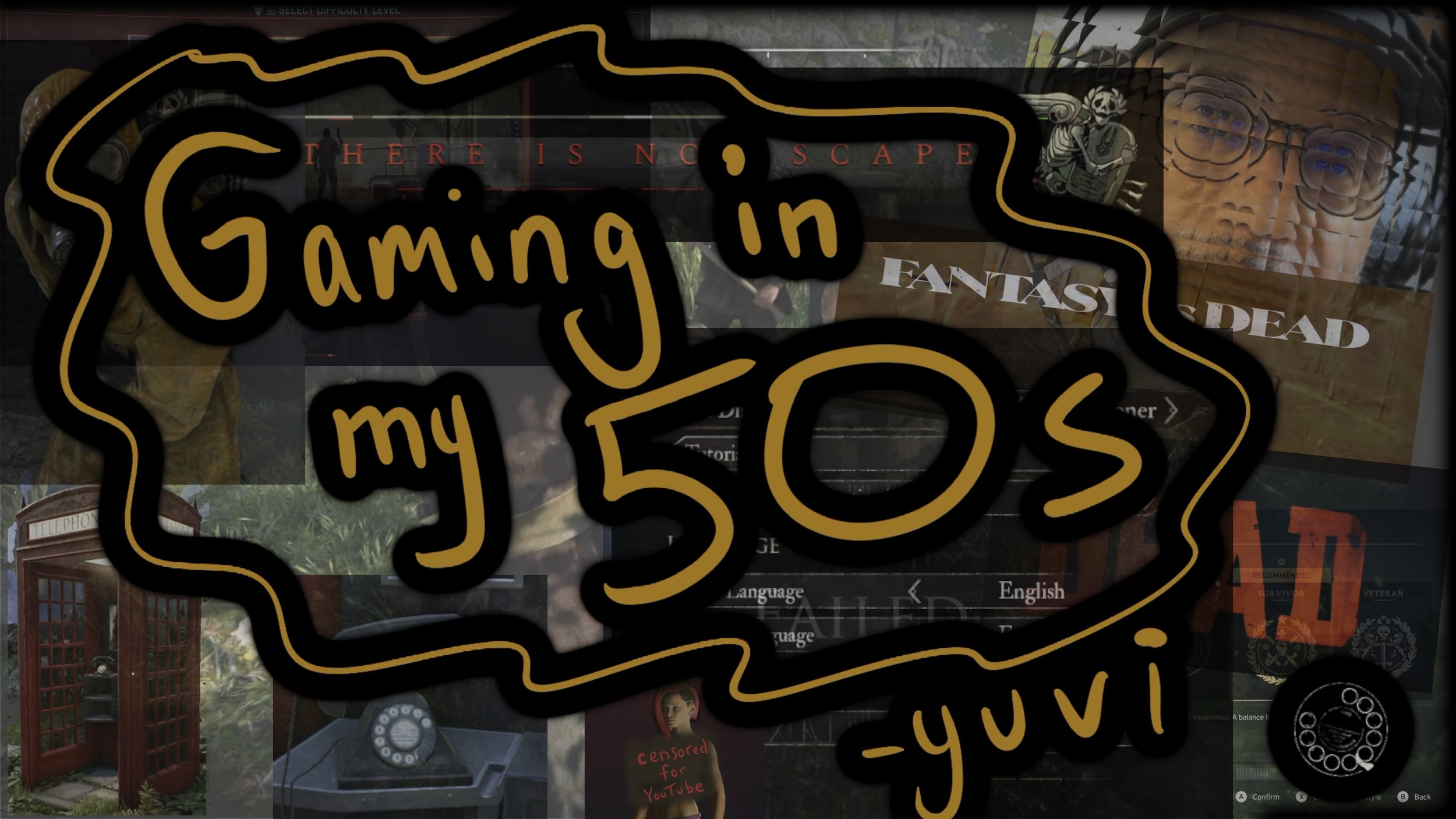
Gaming in My 50s (video)
In this video, I just wanted to share my obsession with video games... and how game difficulty settings (and accessibility settings) make it easy for me to play just about any game, even with my clumsy hands and clumsy brain.
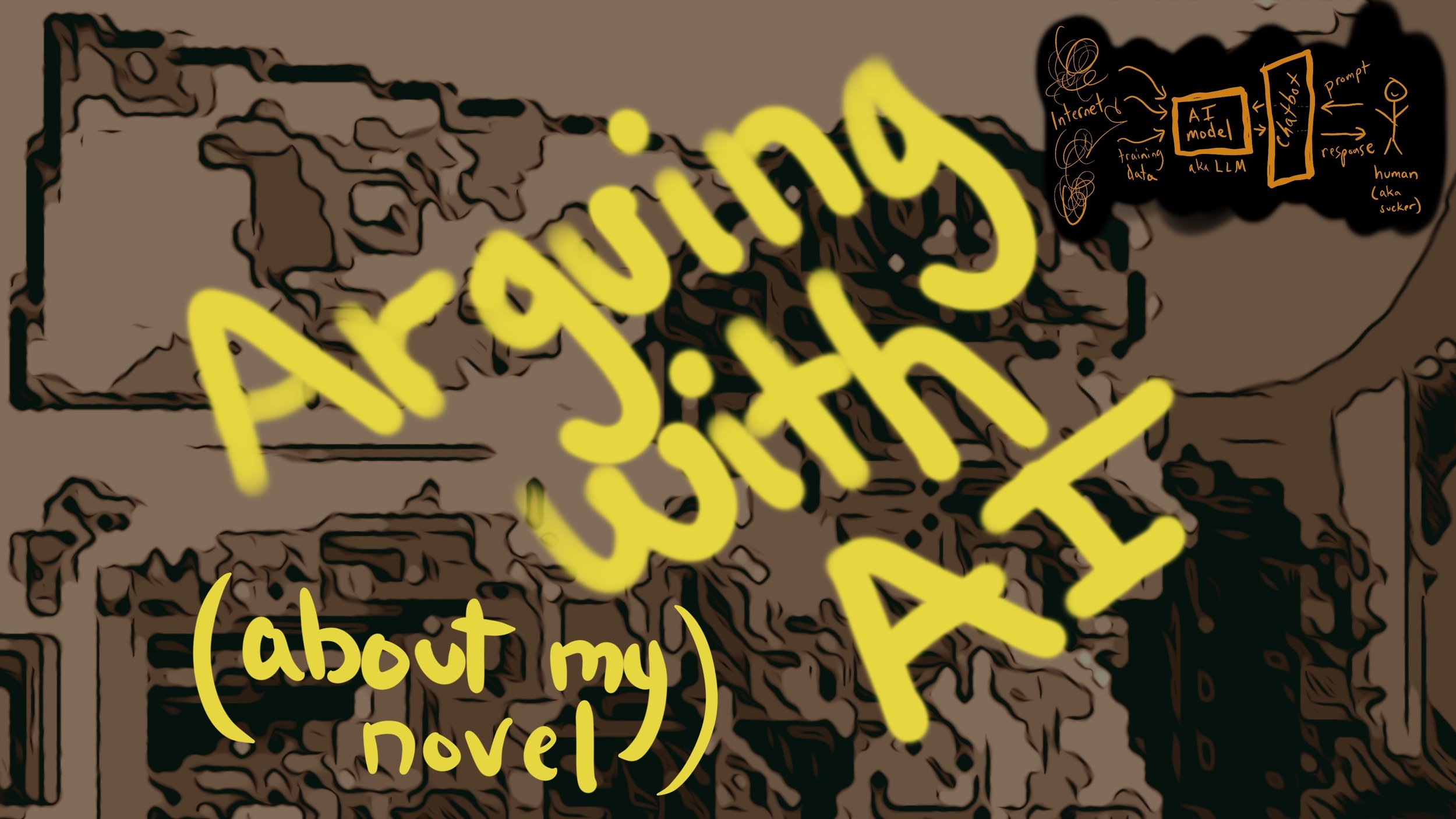
arguing with ai about my novel (video)
So I just finished a draft of the novel that I’m working on (the novel that it feels like I’m FOREVER working on) and I spent the last month using AI to help me work through some of the remaining issues that I wanted to fix this round. Even though I’ve used AI before to help me with various writing and coding problems, I’d never tried putting A WHOLE NOVEL MANUSCRIPT into the prompt and then working through my top issues. In the end, I got a lot out of this experience. But it didn’t come without some annoyances and some bullshit. Oh, sorry, the AI-savvy way to say that is: “…it didn’t come without some hallucinations.” 💻💩
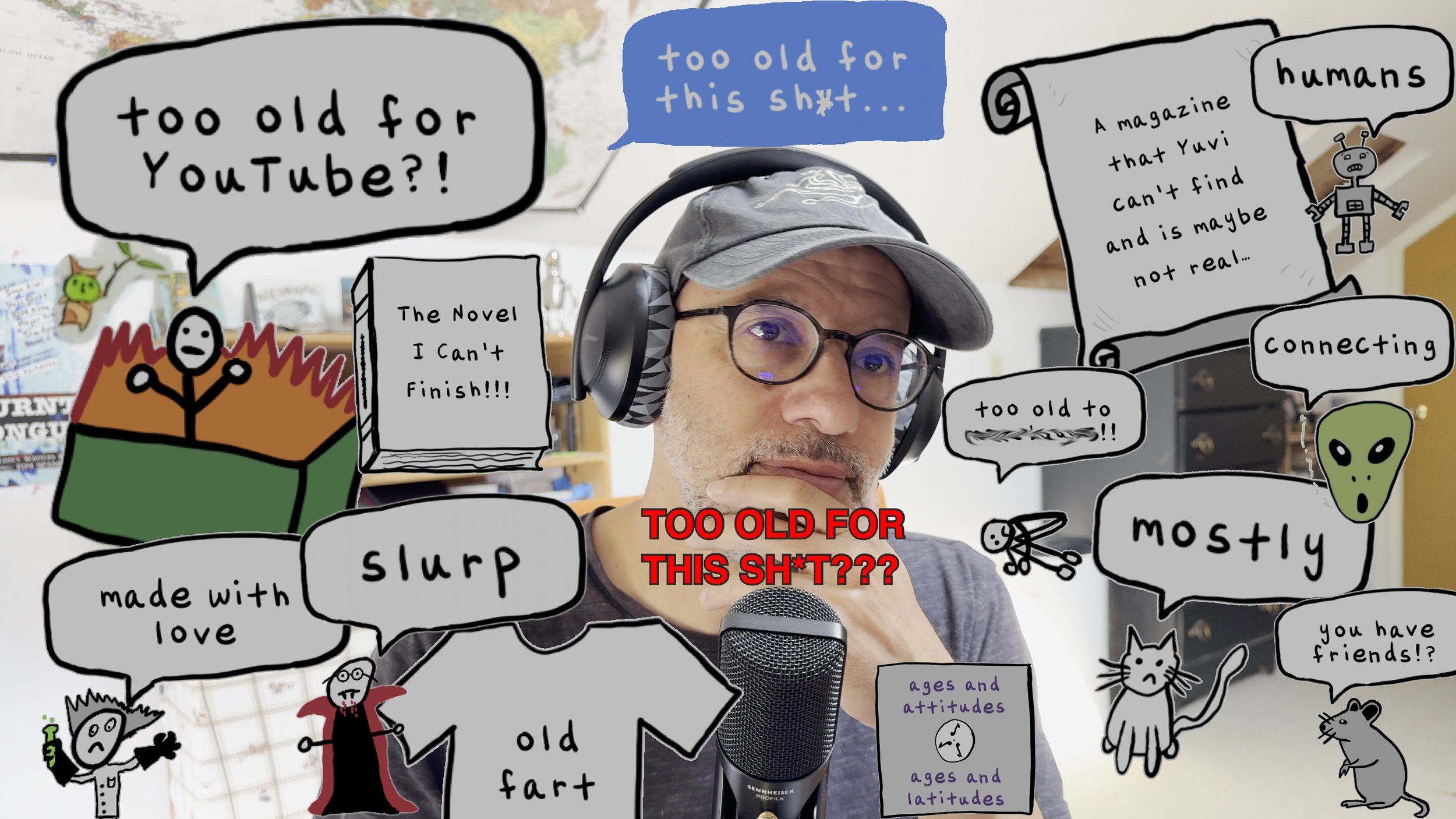
too old for this shit… or not (video)
I've been thinking about aging, and about how we unfairly stereotype different generations (both younger and older generations). In this video, I try to process all this aging crap alongside the novel that I've been writing for most of my adult life.
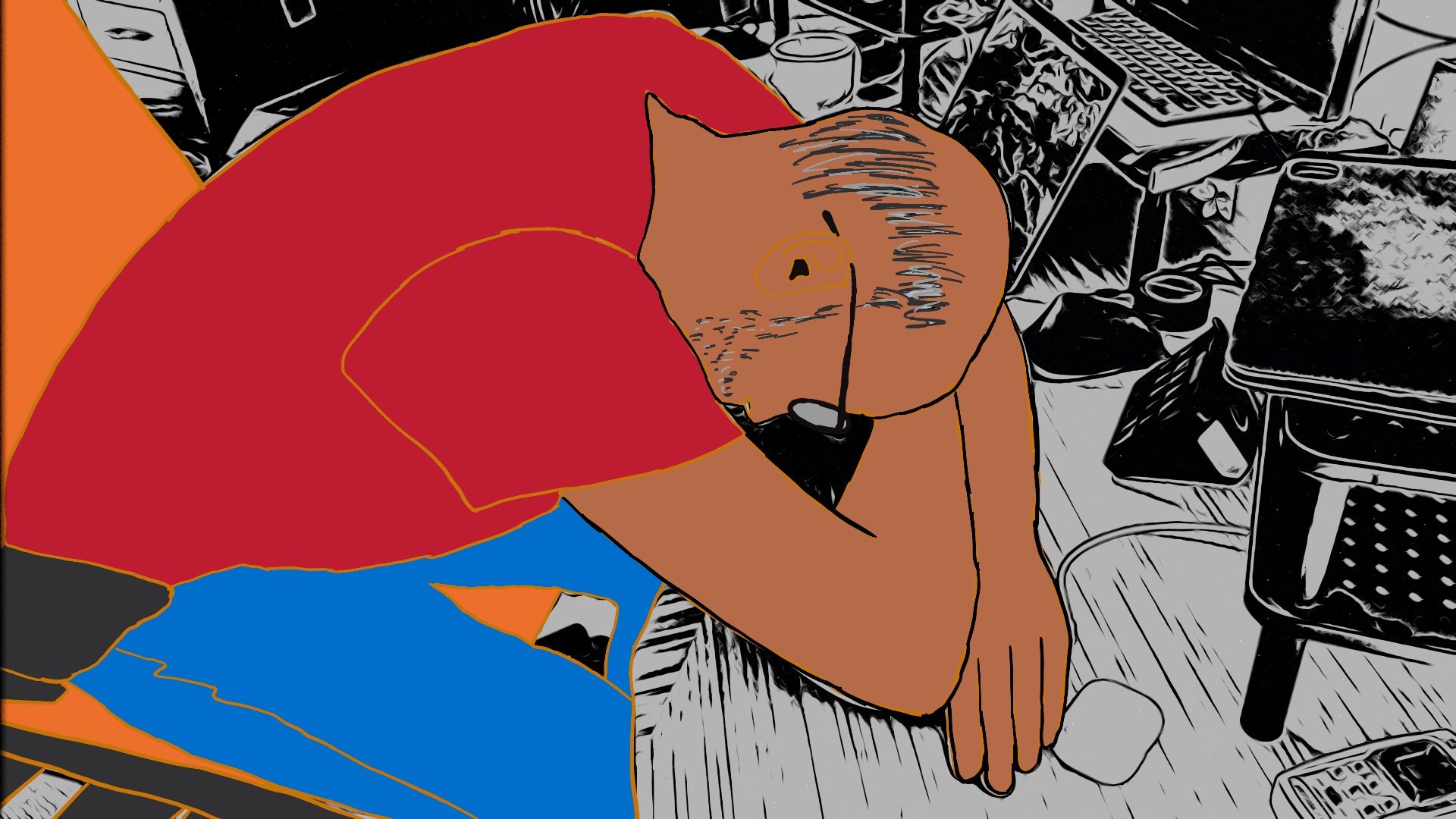
On Writing with Chronic Migraines
It’s one of those writing nights where I’m able to sneak away from family responsibilities to work on my novel, so I’m up in the attic trying to cram in a few words before I wear out. In the scene I’m working on, my fictionalized grandfather, the hero of the novel, gets drunk and has an epiphany. Or at least he thinks it’s an epiphany until he gets sober again. But for tonight he’s staying drunk because I have a headache, and this scene is as finished as it’s going to get…
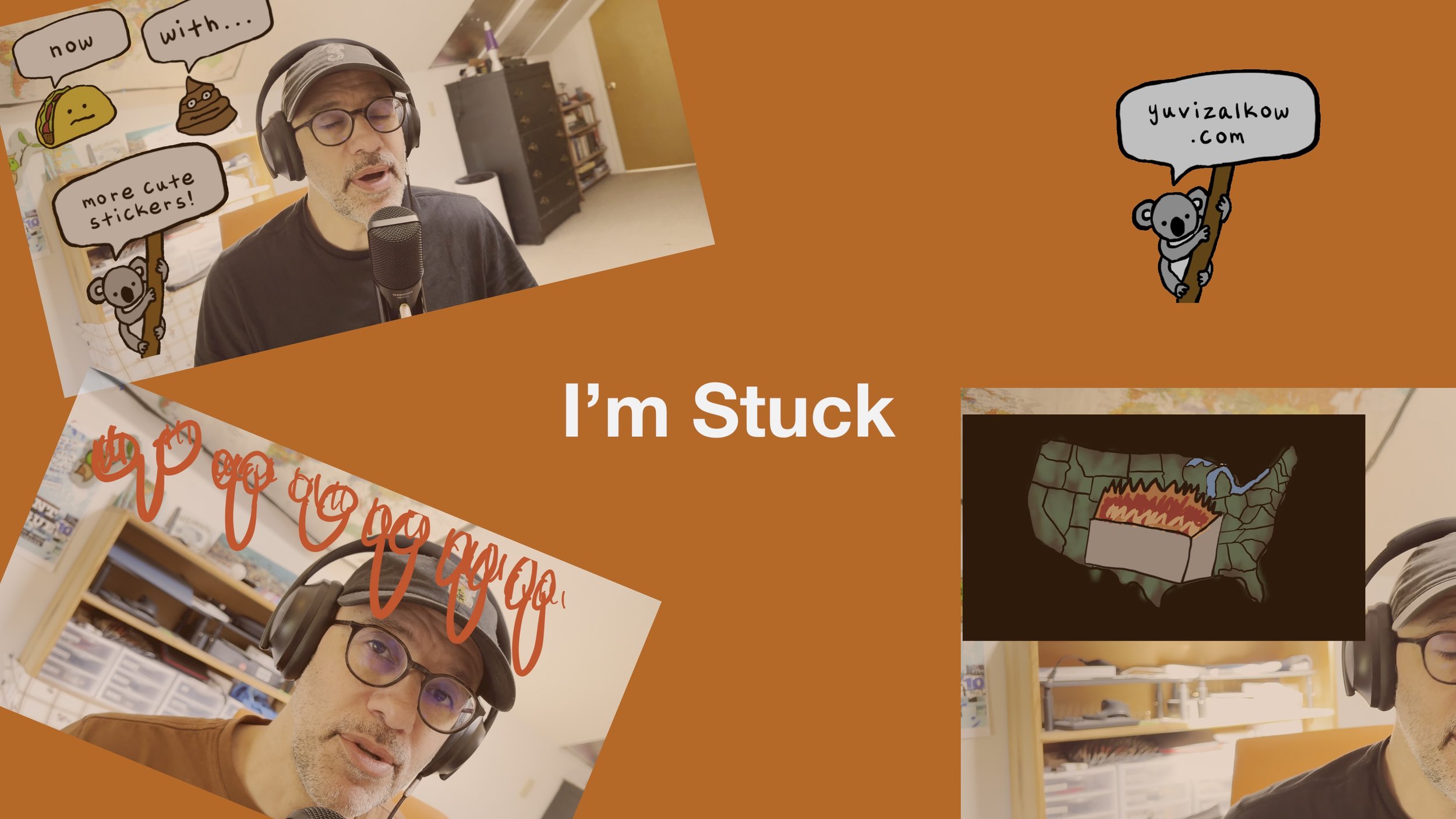
I’m Stuck (video)
So I set out to make a video about how stuck I am in my creative projects. In the process of making this video, and through a writing getaway, I got myself 12.789% less stuck. Check out my clunky process… 📝📽️📚
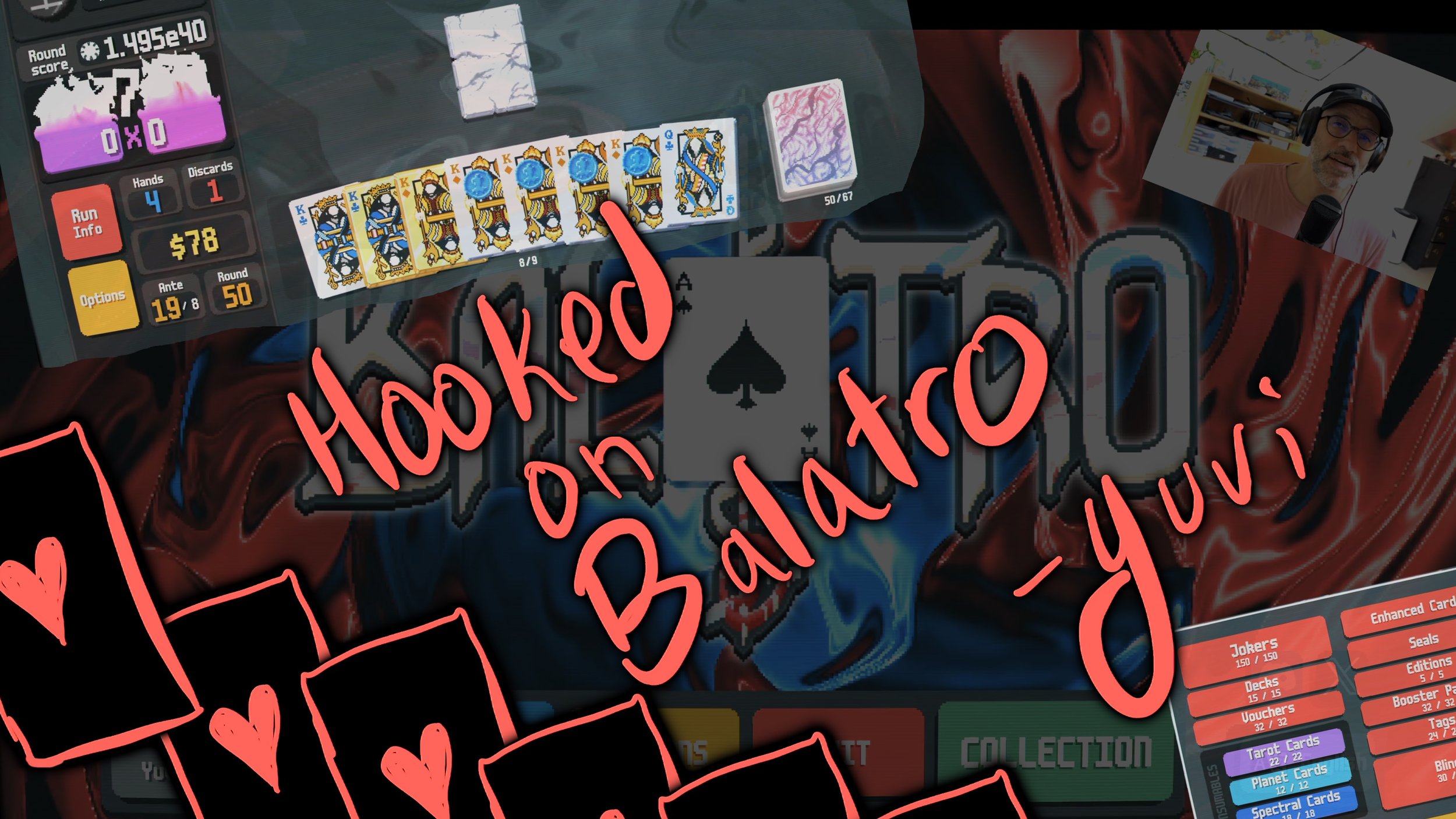
Hooked on Balatro (video)
I made a video about how I’m hooked on a deckbuilder video game called Balatro. 🃏👾🕹️
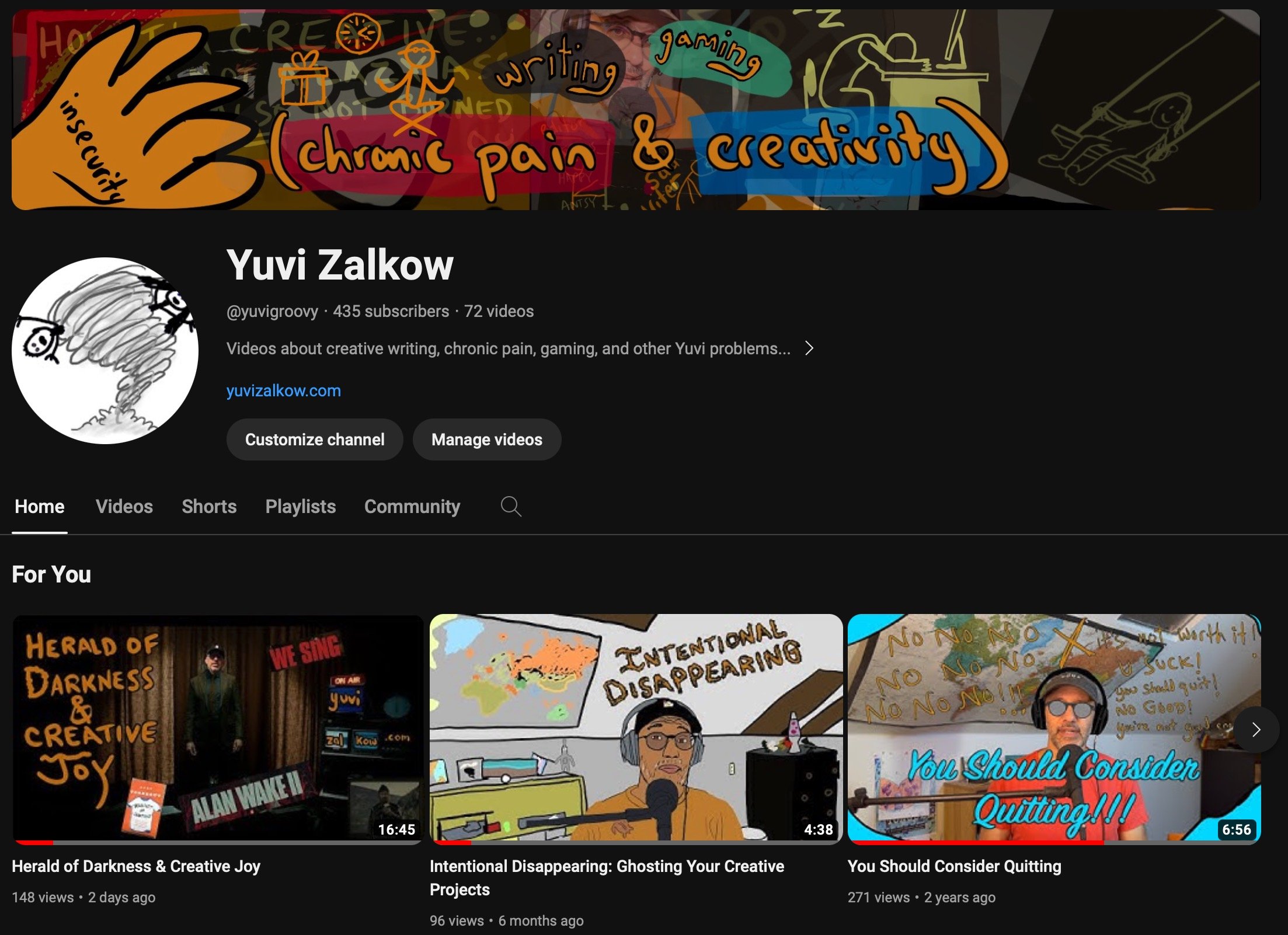
14 Years of Videos About the Creative Process
Exactly 14 years ago, I posted my first video online. I did it out of cowardice. I was getting my Masters at Antioch University and I needed to lead a 50-minute lecture. I was so terrified of public speaking that I recorded a 20-minute PowerPoint presentation to kill some time during the lecture. The video was about my obsessive short story submission process, navigating the slush piles (which were mostly physical piles of papers back then). While recording it, I was so worried it would be boring that I told a few jokes about my insecurities, through my recorded words and through visual gimmicks on the screen. The presentation went well, people liked the insights, laughed at the jokes, and I even had fun with the Q&A afterward. I graduated, but more importantly, I learned that I loved making these silly videos and I've been making videos ever since, always experimenting with different low-budget low-skill ways of adding humor to these videos. I've taken some detours to talk about health issues, chronic pain, gaming, and other weird things, but mostly I've circled around the creative process. 🎭🎭🎭 Anyway, to celebrate these 14 years, I thought I'd share with you 14 of my favorite videos about writing… 📽️📽️📽️ (This post was original published on Writer Unboxed.) 🎙️🎙️🎙️
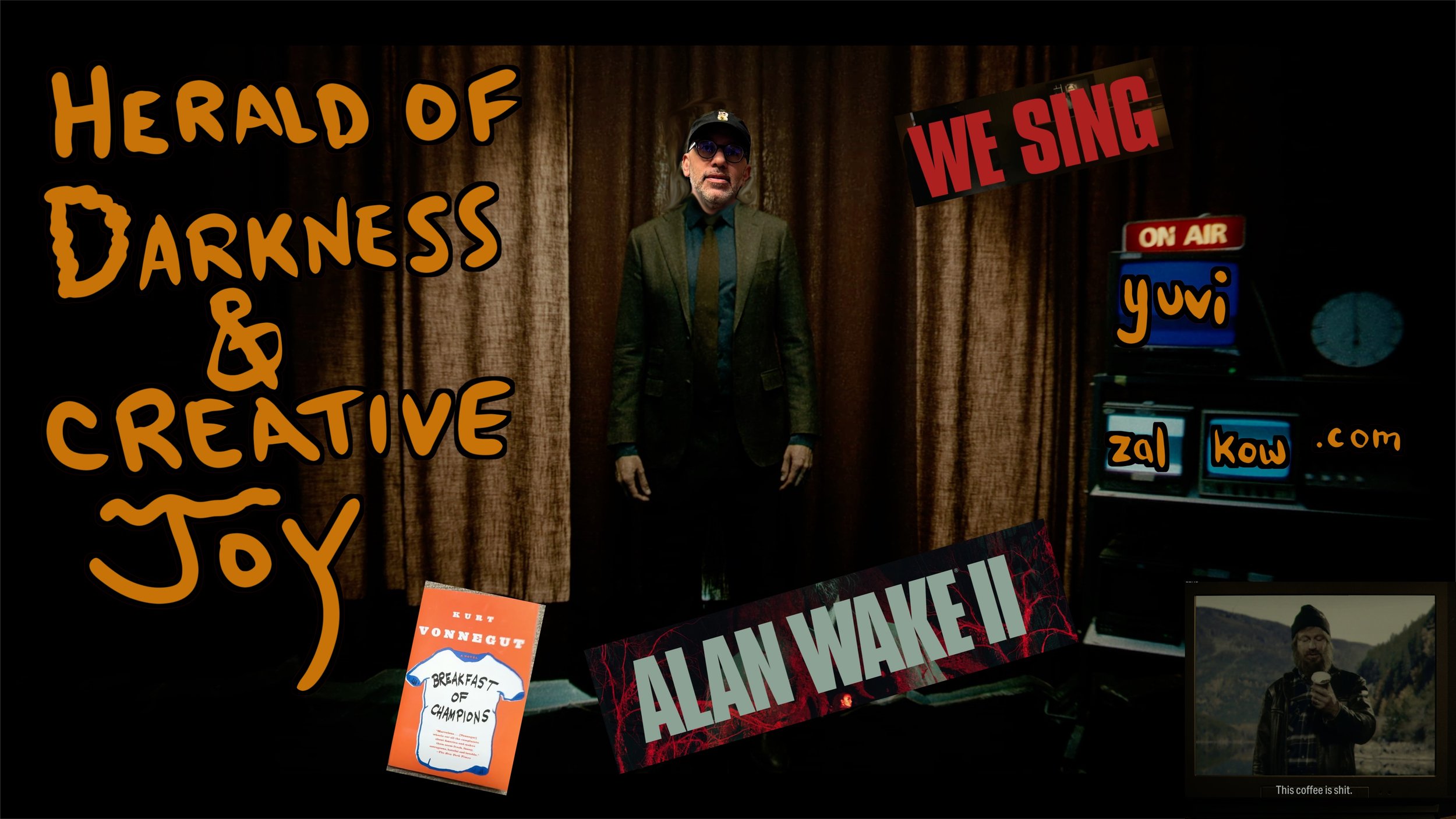
Herald of Darkness & Creative Joy (video)
So I just played a video game (Alan Wake 2) about a writer who is stuck in a nightmare-ish alternate dimension. I loved so much about the game (it doesn’t hurt that I’m also a writer who is stuck). BUT… it’s a horror/suspense game that most of my writer friends aren’t going to play. So, in this video, I thought I’d tell you (in a non-horror-y way) about one chapter in this video game that I found particularly fabulous, and how it connects to one of my approaches to creative projects.
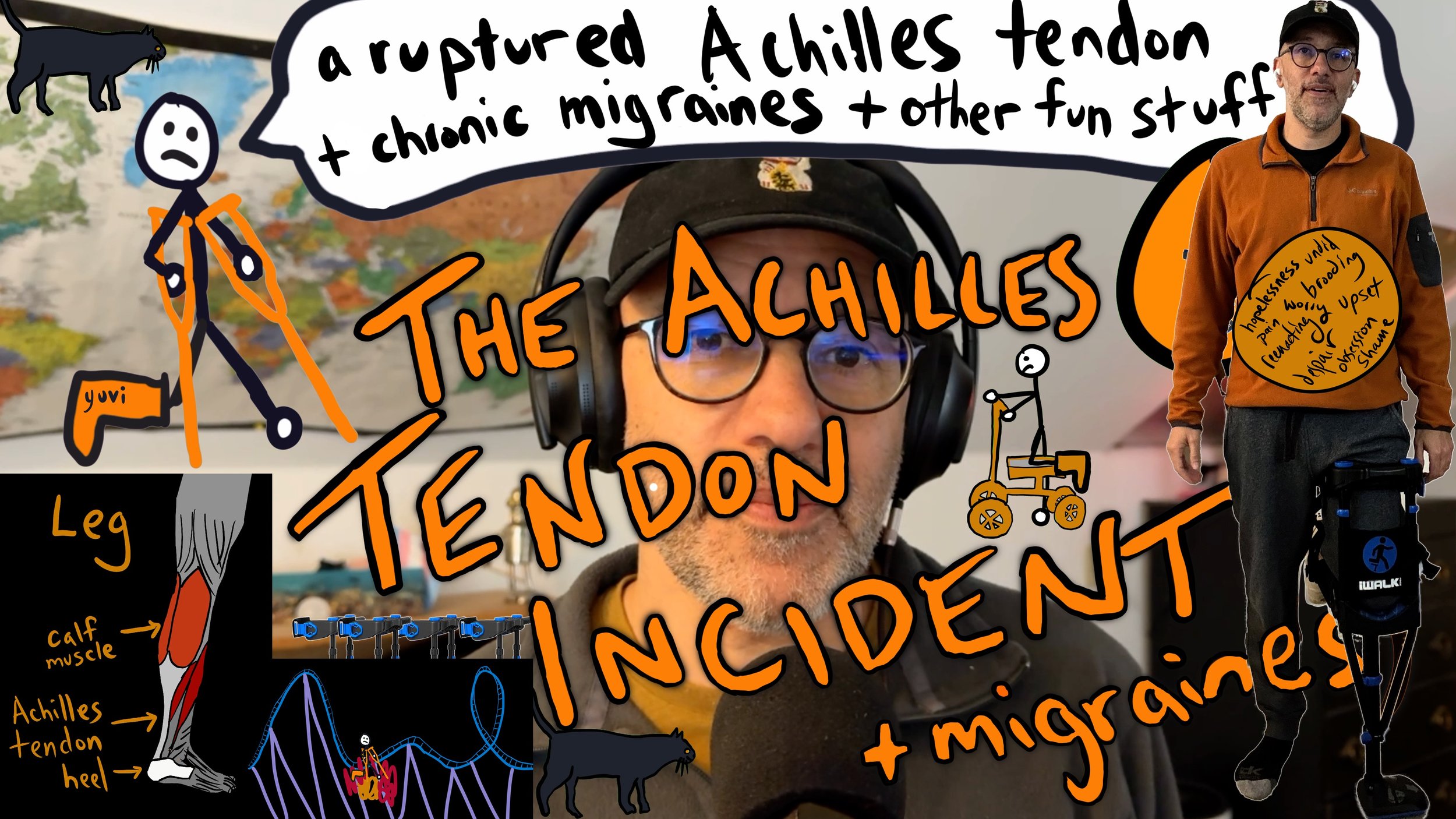
The Achilles Tendon Incident + Migraines (video)
Who wants to learn about my ruptured Achilles tendon alongside chronic migraines??? I’m guessing at least 23.78% of y’all wanna know! It's a fun ride! Check out the video… (Plus a second bonus video below.)
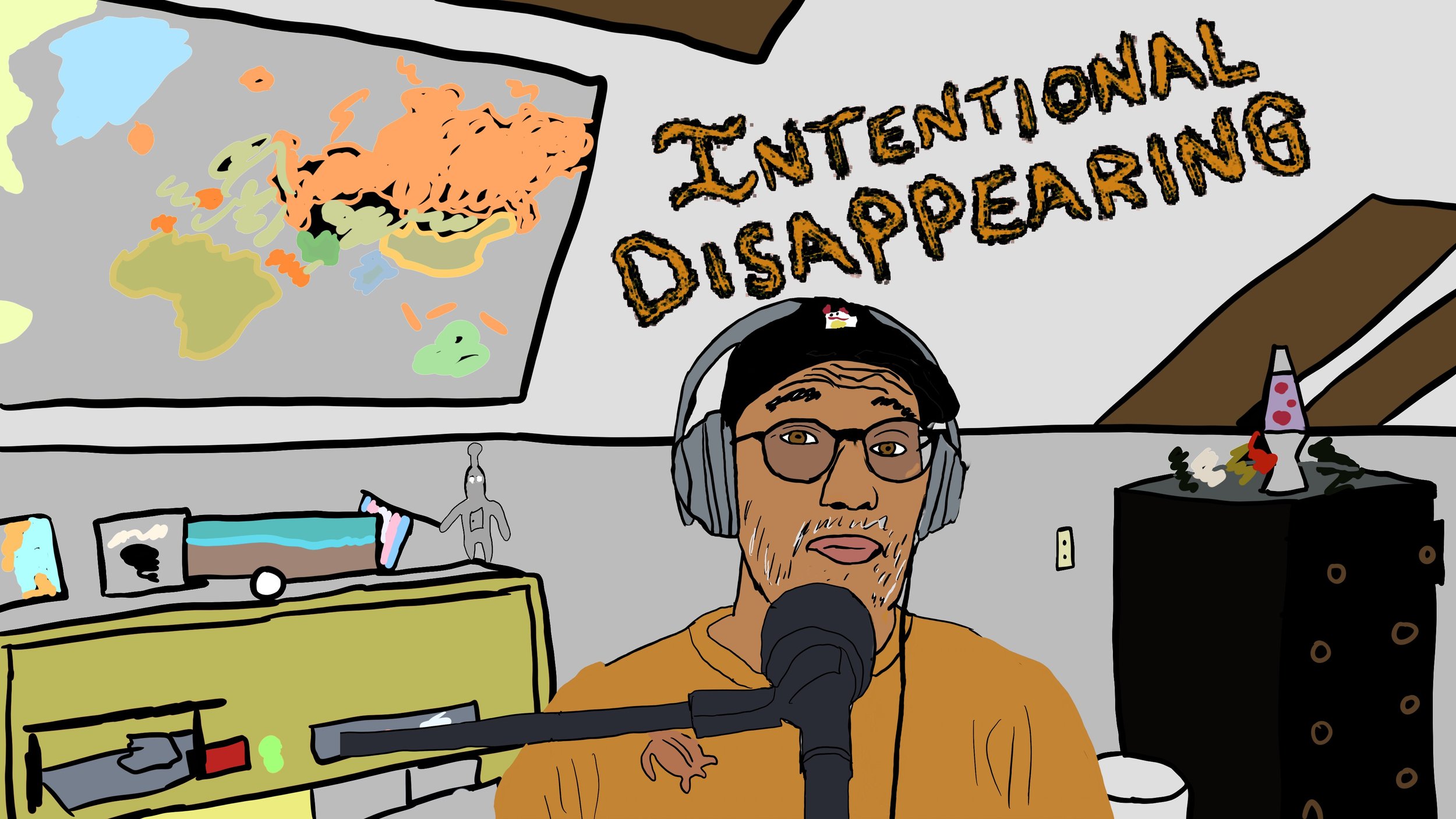
Intentional Disappearing: Ghosting Your Creative Projects (video)
So I disappeared for a little while... I haven’t posted a YouTube video in more than three months. My blog hasn't seen much action. I haven't been writing much over the past few months. 😭 Even though I didn't do a good job of communicating this disappearance to you, it was an intentional disappearance. And it's something I do when personal issues, health issues, family issues, or coup attempts come up in my life. 😱 Check out my new video to get a better feeling for what the hell I'm talking about. (What? Did you think I would spill the tea right here in this post? How else is my video going to get 12 views instead of 0 views?! And also, SOMEONE is going to have to appreciate how crooked my glasses are in this video! And ALSO, did you notice that I'm keeping up with the kids these days by saying "spill the tea"???)
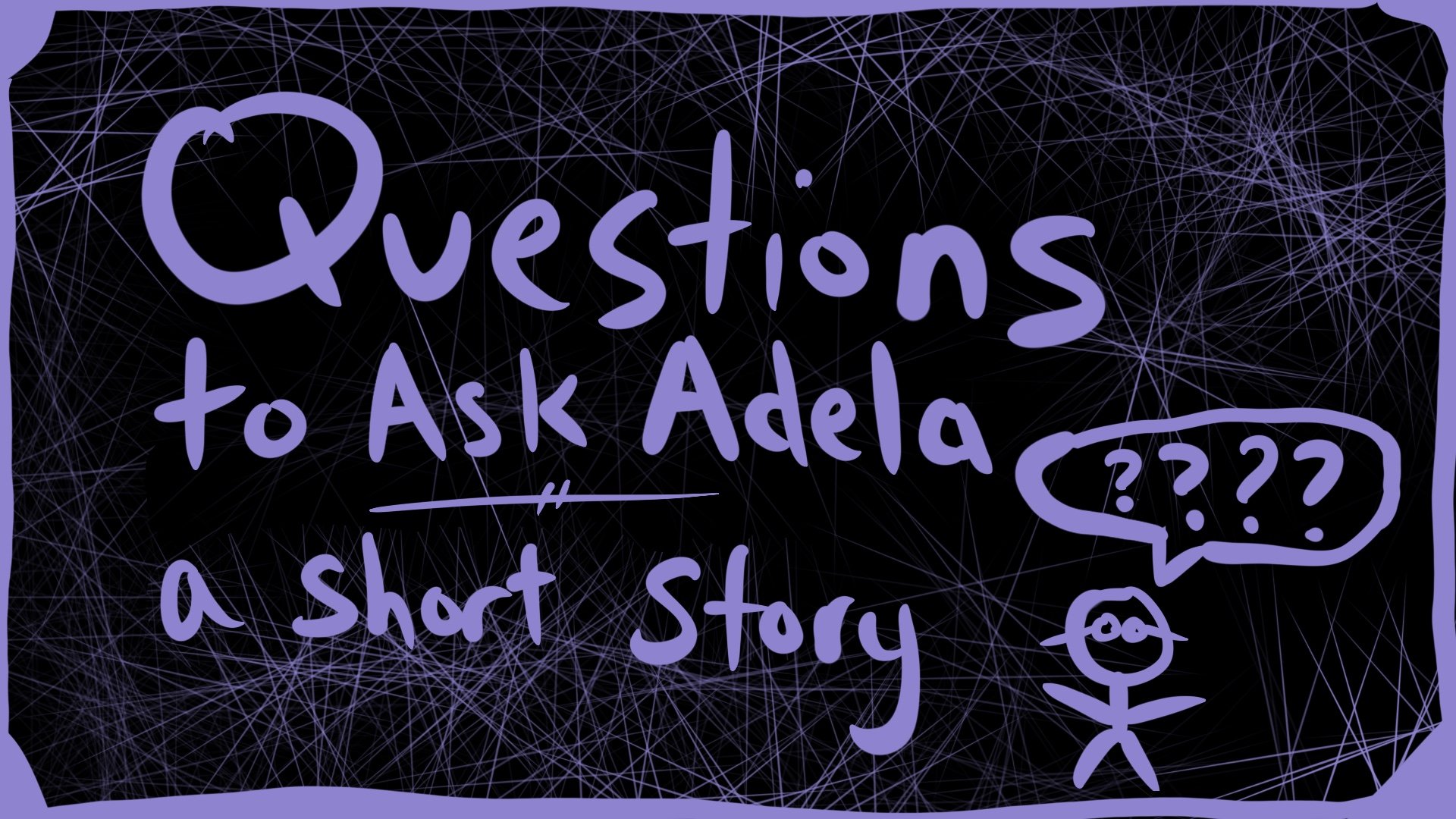
Questions to Ask Adela (a short story)
Well, it’s been a while since I’ve gotten a short story published… To be honest, I was second-guessing whether I still remembered how to write a damn short story. 😭 I’m excited to tell you that my story QUESTIONS TO ASK ADELA is now online at Flash Fiction Magazine! 🎉 If you want to jump right to it, here’s the link. 📗 If you want more info about my writing process, read on. ✍️ And if you don’t care about any of this crap 💩, then why did you get this far into the post!?
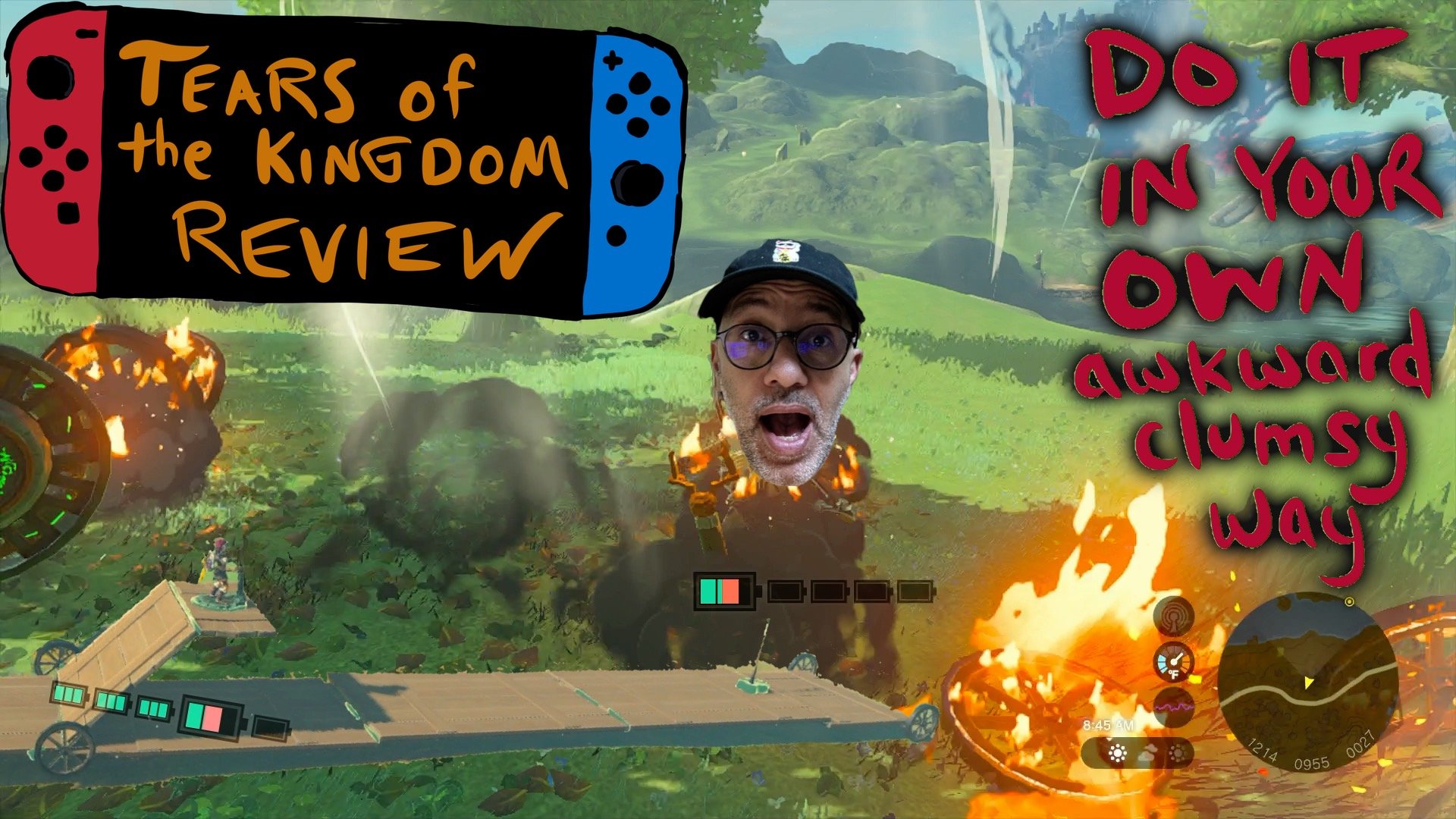
Do It in Your Own Awkward Messy Way: Tears of the Kingdom Review (video)
So I got obsessed with yet another video game. 🕹️ This time it’s Nintendo’s The Legend of Zelda: Tears of the Kingdom. It’s a hell of a game—maybe the best game I’ve ever played—and this video is about how it has affected my creative mindset. (I mean, I needed some excuse to connect video gaming with my novel writing!) Also, you get to see some of the awful failed vehicles that I attempted to create in the game… 🚀💥
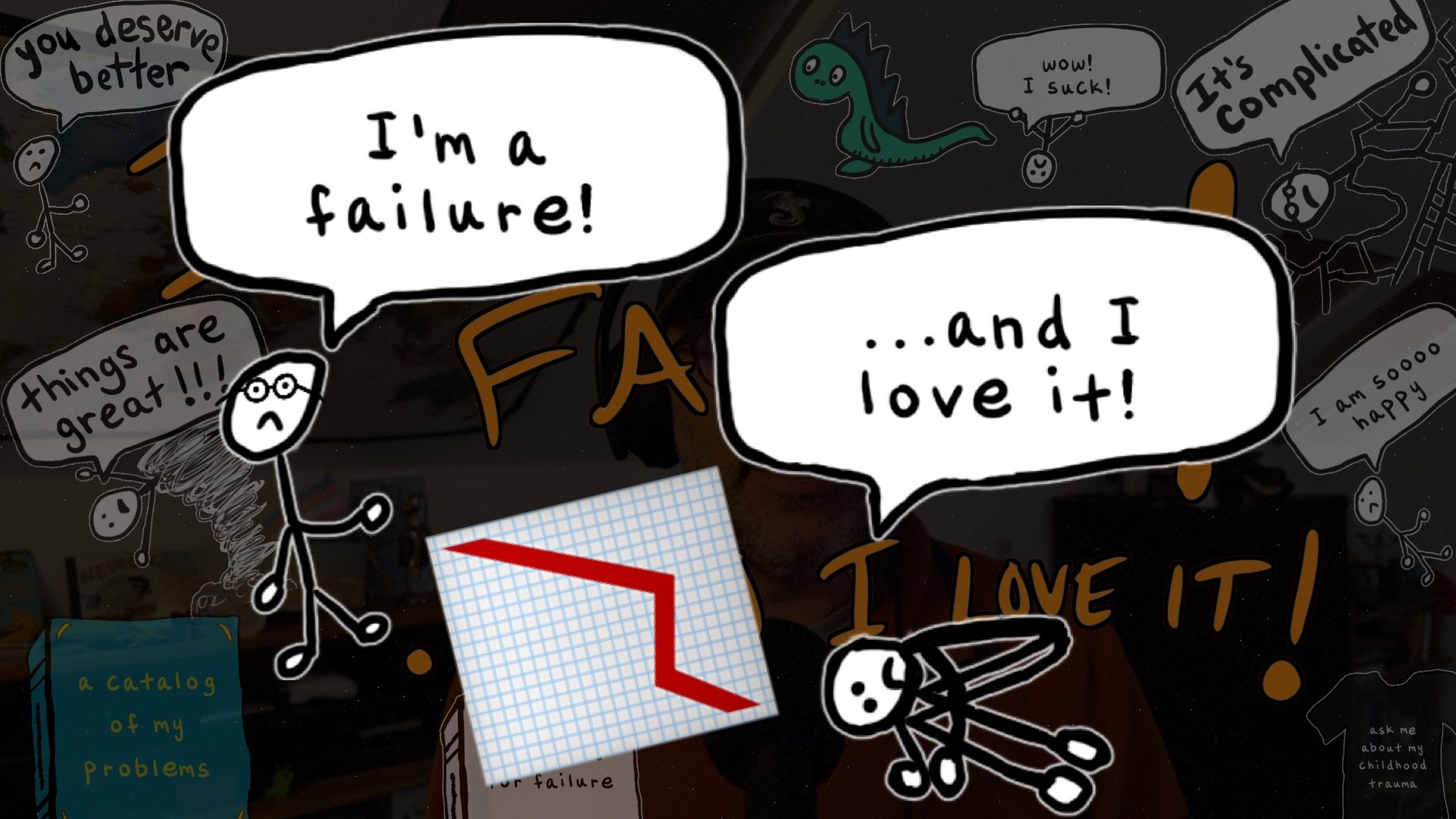
I’m a failure!… And I love it! (video)
It’s easy to analyze my creative ventures and come to the conclusion that they are failures. 😩 And it used to be easy for me to conclude that I was failure as well. 😭 But I’m not a failure… I was just looking at the wrong numbers. 📉📈 I love what I’m up to… ❤️️ And here’s a video where I talk it all through… 😜
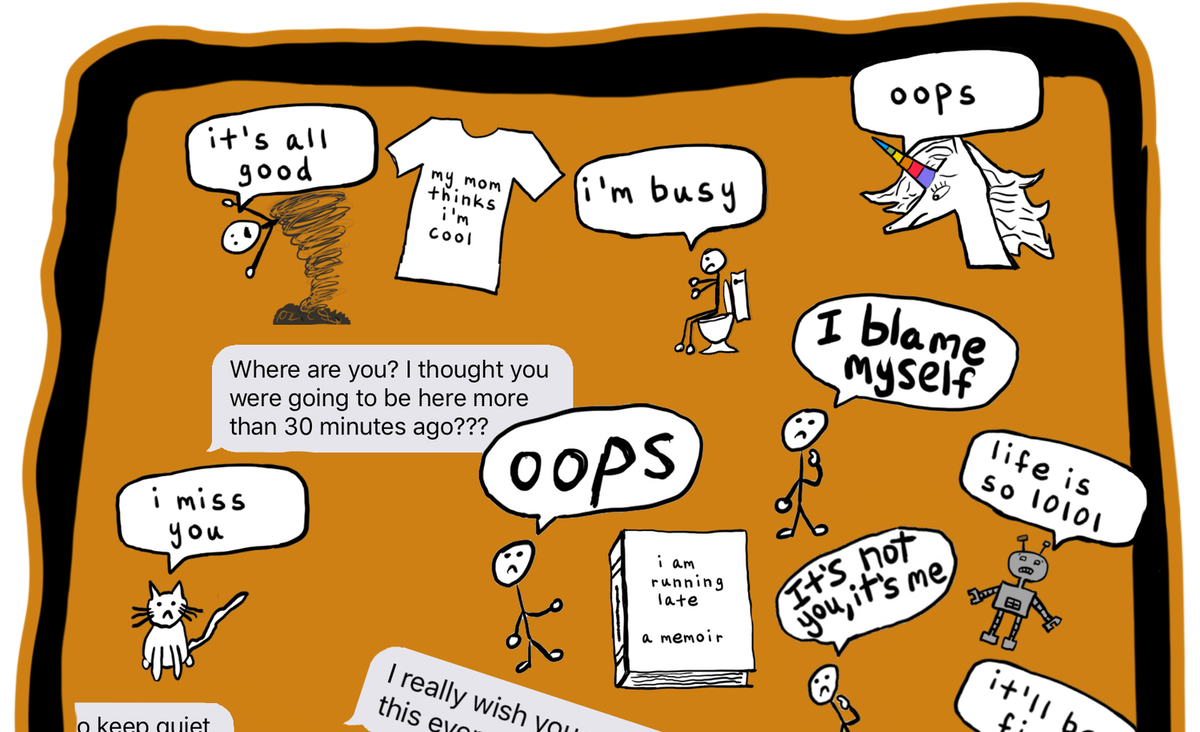
A steaming pile of new features for Neurotic Stix Pro!
I’m not sure how many of y’all know that I have a mobile app in the iOS App Store, but I do. It’s called Neurotic Stix Pro and it’s even more neurotic now because I added a bunch of features to the latest update. 🎉🎉🎉 The app lets you create quirky, twitchy, digital stickers with your own captions using more than 40 different templates… Now it has more stickers, more colors, more options, and many other neurotic things. It’s free to try, but I charge a few bucks for the full version. It’s mostly a labor of love, though I also wouldn’t complain if I made a bit more money on this laborious love. 👩🎨❤️ Here are the kinds of things you can easily create with the app 👇👇👇
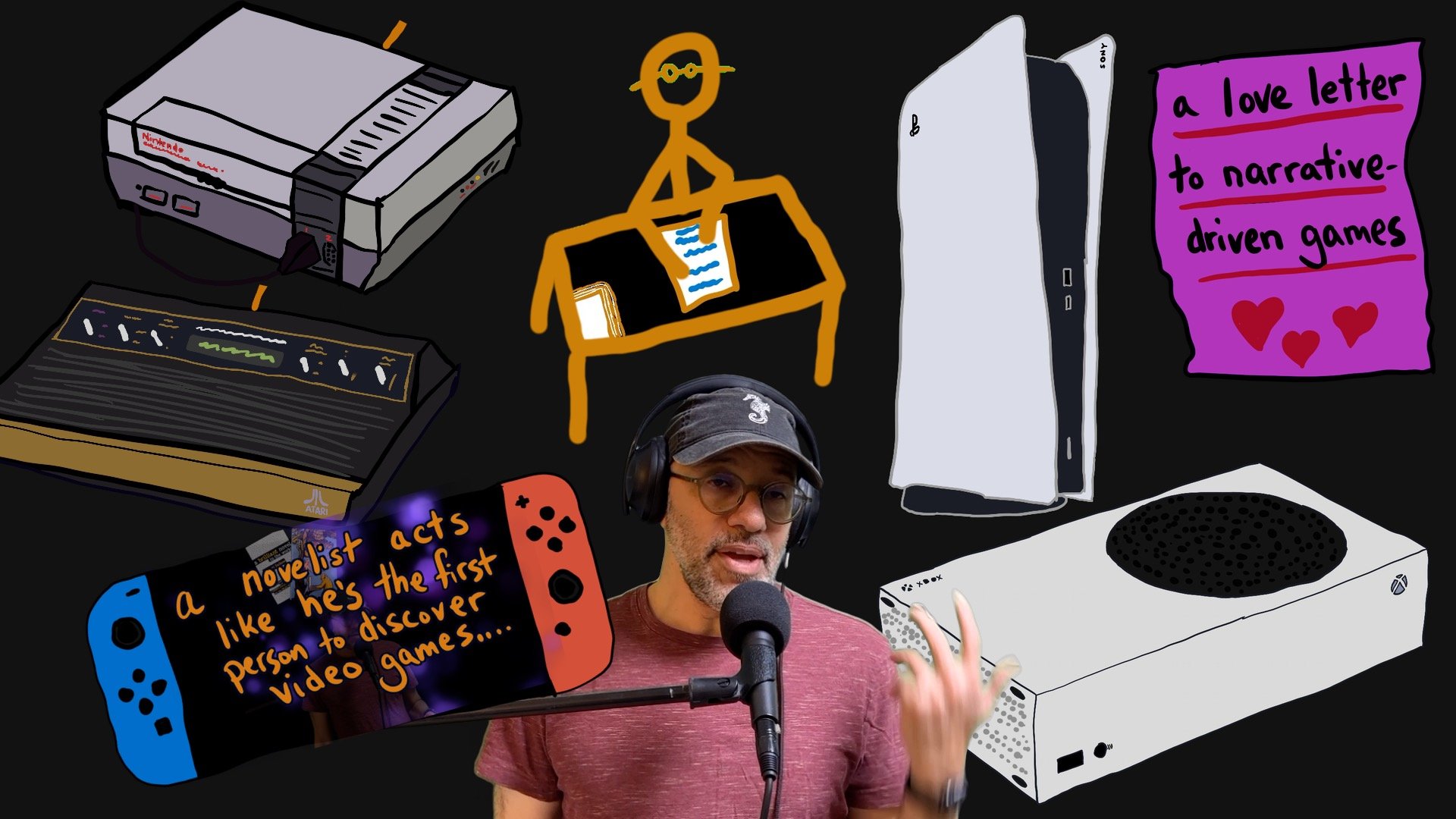
a novelist acts like he’s the first person to discover video games (video)
❤️ aka: my fascination with narrative-driven games ❤️️
OK. I know I’ve been talking about video games a lot lately. 🕹️😱 It’s been a point of fascination and obsession the past few years. But I thought I’d take this opportunity while HBO’s The Last of Us is on the air (a great show based on a great video game) to dig into my history with video games (including my secret obsession for Dance Dance Revolution and the time I broke my hand playing VR!). In this video, I talk about why I love video games so damn much and how it inspires me while writing a novel. ✍️👾
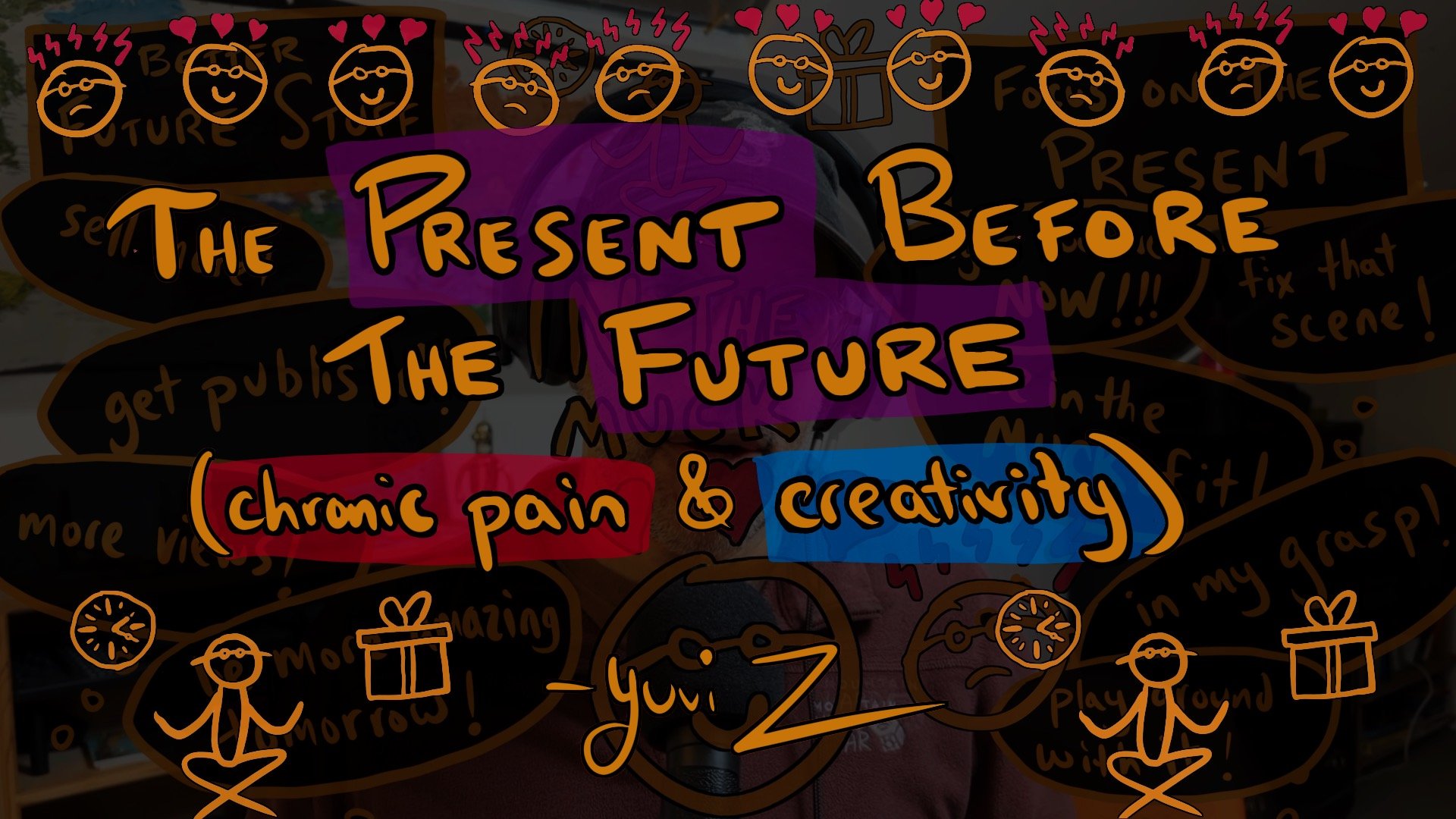
Present Before the Future: Chronic Pain & Creativity (video)
There’s been something on my mind lately about how I approach my chronic pain (migraines! 🤕) that has similarities to my approach with creative projects (writing! ✍️ YouTubing! 📽️ coding! 👨💻 podcasting!). It relates to the distinction between future-focused issues 🔮 and present-focused issues 🧘. And so I tried to capture it in this video…
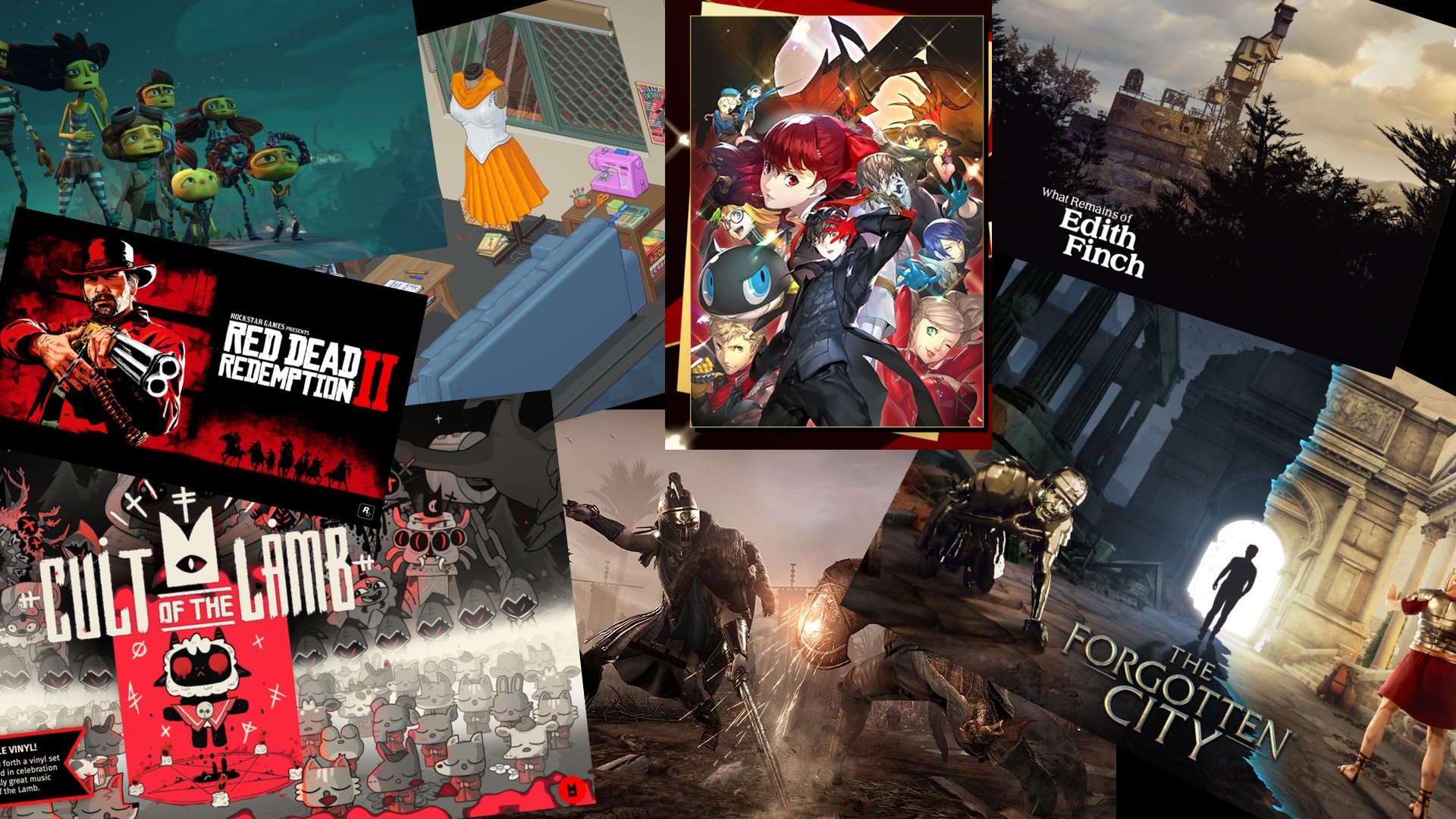
where yuvi talks about the video games he played in 2022
(CONTENT WARNING: This post is about video games. And it also involves a lot of parentheticals!) (Like, A LOT!) 🫠🕹️😵💫
So among other activities this year (like publishing a novel and blogging and YouTube and migraines), this was the year where I went more deeply into video games (and ventured outside of the Nintendo Switch). Specifically, I got an Xbox Series S (i.e. the cheapest of the new generation of consoles) and Xbox Game Pass (i.e. sorta like Netflix for gaming). During nights when I was too angst-ridden to sleep or get stuff done (i.e. A LOT), I played games. When looking at the list, it's a little bit alarming how many games I played! (How the hell did I have time for all these damn games when I didn't have time to clean my room!?) 🕹️
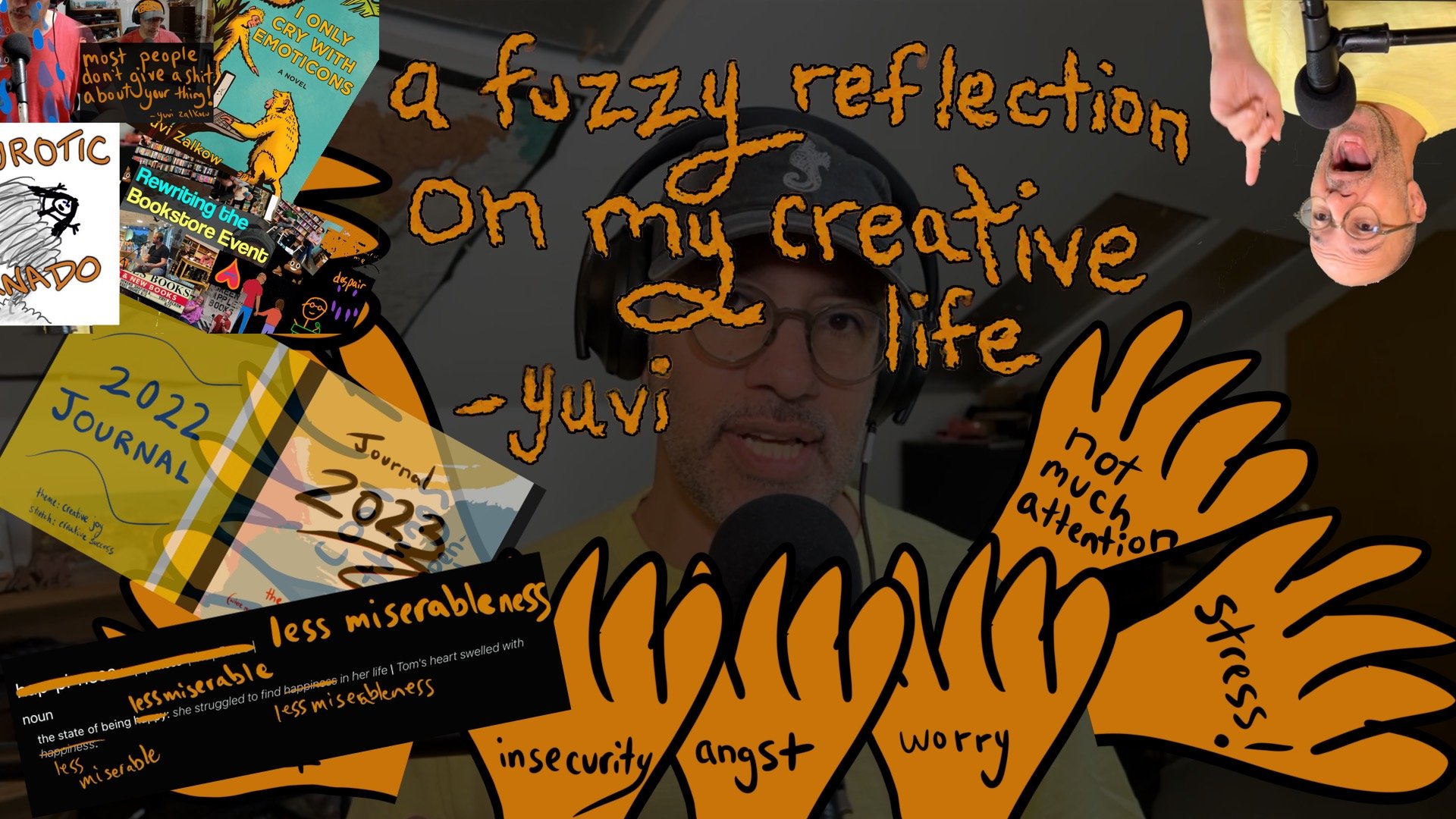
a fuzzy reflection on my creative life (video)
I'm not so into new year's resolutions 🎉, but I still wanted to awkwardly think through my attitude (mostly around my creative life) 🧑🎨 in 2022, and whether it needs to change in 2023 🌪️😭 (beyond just using fewer emoji in place of real feelings)…
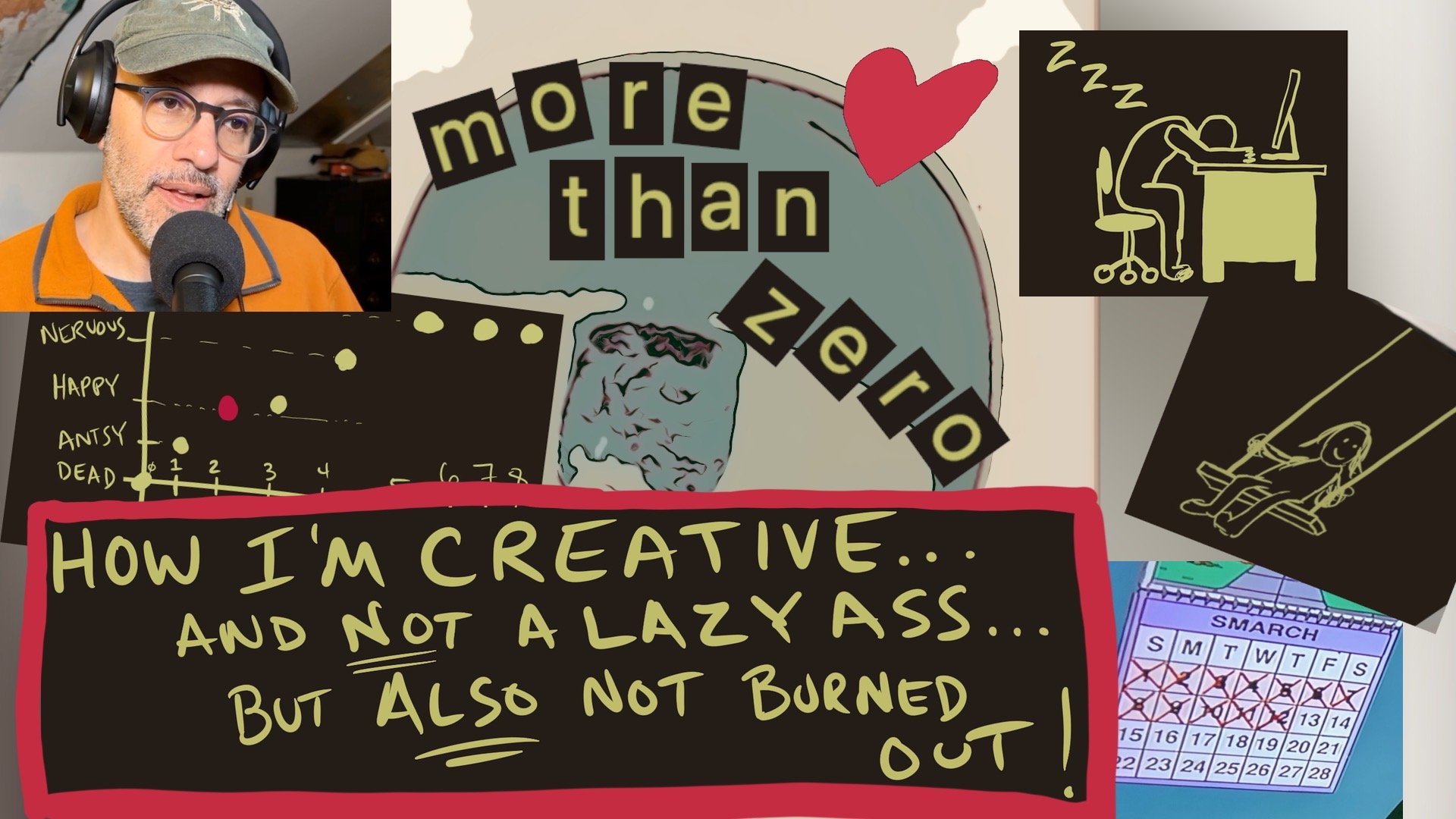
more than zero: an overly simple plan for my creative projects (video)
I’m not the fastest writer in the world (ten years between novels!?). ✍️ I’m also a really slow reader. 📚 I’m slow at creating YouTube videos. 📽️ I’m slow at a lot of things. 🐢
But I also continuously nudge myself to create interesting things. As I mentioned in my last video (wait, what!?, you didn’t watch it!? here it is: to hell with your productivity tips), I’m not into having a rigid productivity plan for my creative projects. But I do try to follow one simple rule: More Than Zero. I need to make more than zero progress on all the important projects each week. Roughly. Mostly. Usually.
